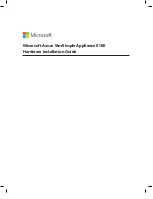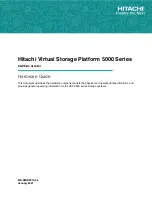
Table 13. Best practices (continued)
Environment
Electromagnetic Noise
Severity Level
Grounding
Recommendations
Existing commercial building
is not subject to natural
environmental noise or
man-made industrial noise.
This building contains a
standard office environment.
This installation has a history
of malfunction due to
electromagnetic noise.
Medium
Appropriate grounding
practices must be closely
followed. Determine source
and cause of noise if
possible, and mitigate as
closely as possible at the
noise source or reduce
coupling from the noise
source to the victim
equipment.
New commercial building is
not subject to natural
environmental noise or
man-made industrial noise.
This building contains a
standard office environment.
Low
Appropriate grounding
practices should be followed
as closely as possible.
Electromagnetic noise
problems are not anticipated,
but installing a best practice
grounding system in a new
building is often the least
expensive route and the best
way to plan for the future.
Existing commercial building
is not subject to natural
environmental noise or
man-made industrial noise.
This building contains a
standard office environment.
Low
Appropriate grounding
practices should be followed
as much as possible.
Electromagnetic noise
problems are not anticipated,
but installing a best practice
grounding system is always
recommended.
Note:
In all situations, grounding practices must comply with local National
Electric Code (NEC) requirements or local laws and regulations.
Note:
Always ensure that all of the modules are completely installed and that the
captive installation screws are fully tightened. In addition, ensure that all I/O
cables and power cords are properly seated. These practices are normal installation
practices and must be followed in all installations.
Preventing Electrostatic Discharge Damage
Electrostatic discharge (ESD) damage, which can occur when modules or other
Field Replaceable Units (FRU - a circuit board, part, or an assembly which can be
easily removed and replaced without having to send the entire product to a repair
facility.) are improperly handled, results in intermittent or complete failures.
Modules consist of printed circuit boards that are fixed in metal carriers.
Electromagnetic interference (EMI) shielding and connectors are integral
components of the carrier. Although the metal carrier helps protect the board from
ESD. Always wear an ESD grounding strap when handling modules.
Follow these guidelines for preventing ESD damage:
v
Always wear an ESD wrist strap and ensure that it makes maximum contact
with bare skin. ESD grounding straps are available with banana plugs, metal
spring clips, or alligator clips. All IBM c-type SAN devices are equipped with a
banana plug connector (identified by the ground symbol next to the connector)
72
SAN192C-6, SAN384C-6 and SAN768C-6 Installation, Service, and User Guide
Summary of Contents for SAN192C-6
Page 2: ......
Page 8: ...vi SAN192C 6 SAN384C 6 and SAN768C 6 Installation Service and User Guide ...
Page 10: ...viii SAN192C 6 SAN384C 6 and SAN768C 6 Installation Service and User Guide ...
Page 24: ...xxii SAN192C 6 SAN384C 6 and SAN768C 6 Installation Service and User Guide ...
Page 114: ...90 SAN192C 6 SAN384C 6 and SAN768C 6 Installation Service and User Guide ...
Page 122: ...98 SAN192C 6 SAN384C 6 and SAN768C 6 Installation Service and User Guide ...
Page 143: ...Figure 47 AJK2 Figure 48 AJK1 Figure 49 AJJY Appendix B Cable and Port Specifications 119 ...
Page 144: ...Figure 50 AJJV 120 SAN192C 6 SAN384C 6 and SAN768C 6 Installation Service and User Guide ...
Page 146: ...122 SAN192C 6 SAN384C 6 and SAN768C 6 Installation Service and User Guide ...
Page 158: ...134 SAN192C 6 SAN384C 6 and SAN768C 6 Installation Service and User Guide ...
Page 159: ......
Page 160: ...IBM Part Number 02JD693 Printed in USA SC27 9276 00 1P P N 02JD693 ...
















































